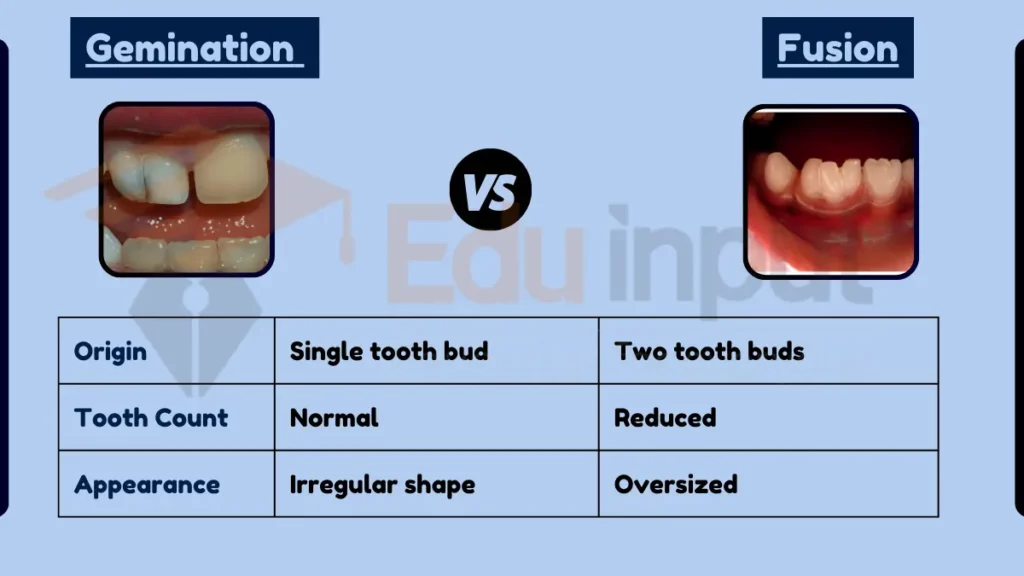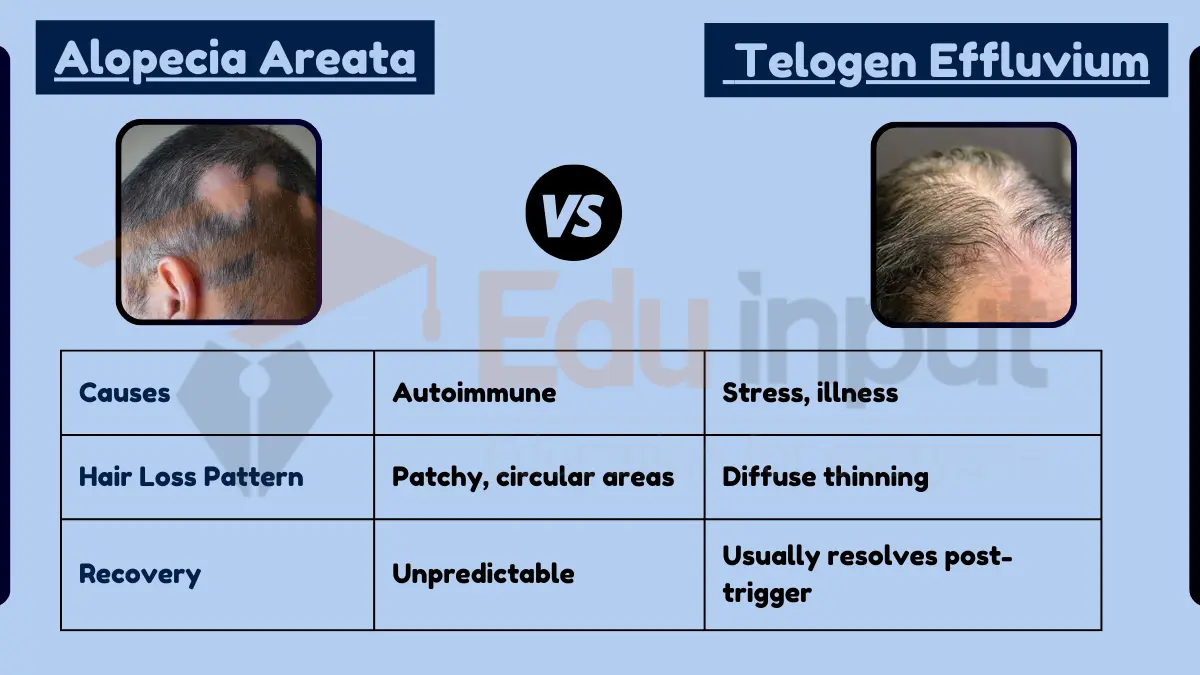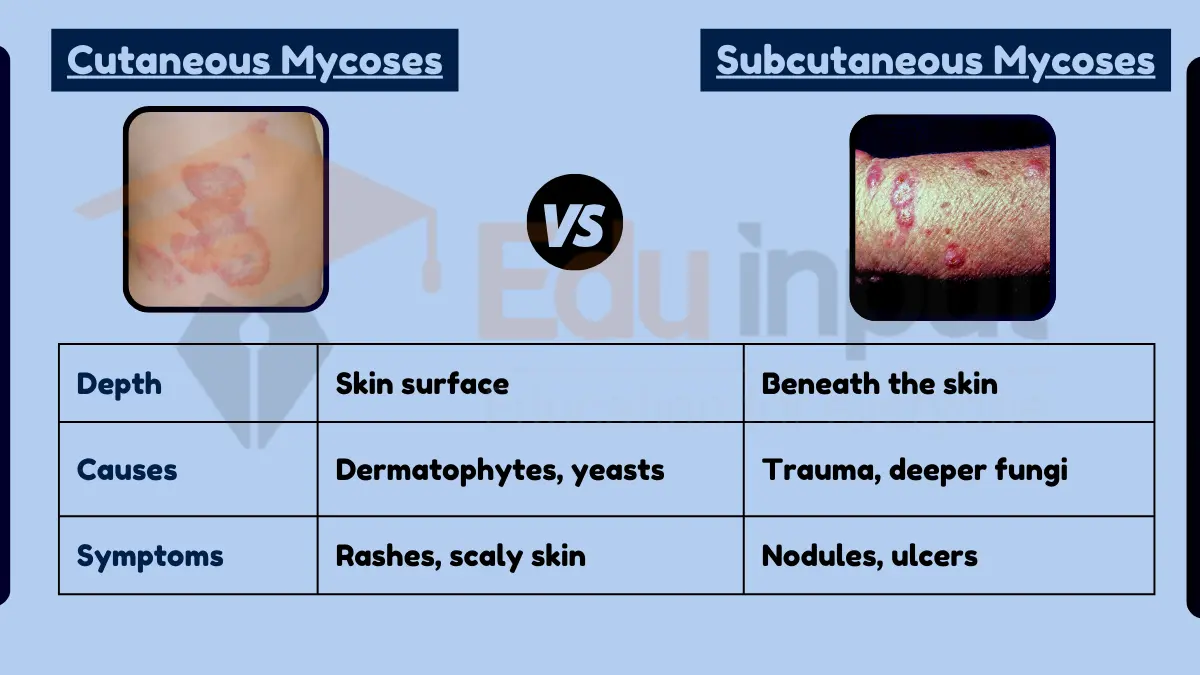Difference Between Gemination and Fusion
December 23, 2023
Table of Contents
Key Difference
Gemination and fusion are both dental anomalies affecting the appearance of teeth, but they differ in their formation and presentation. Gemination occurs when a single tooth bud attempts to divide, resulting in a large, often irregularly shaped tooth that is counted as one in the dental arch. Fusion happens when two separate tooth buds join together, forming a single, oversized tooth. In fusion, the tooth count in the dental arch is reduced by one.

Comparative Analysis
- Origin and Development:
- Gemination: Starts from a single tooth bud.
- Fusion: Involves two separate tooth buds merging.
- Tooth Count in Dental Arch:
- Gemination: Normal tooth count, as it’s a single tooth.
- Fusion: Reduced count, as two teeth merge into one.
- Appearance:
- Gemination: Often irregularly shaped but normal size.
- Fusion: Oversized, combining characteristics of two teeth.
- Frequency and Location:
- Both conditions are relatively rare and can occur in primary or permanent teeth.
- Dental Health Implications:
- Both can lead to aesthetic concerns, possible alignment issues, and may affect oral hygiene.
Table Summary
| Feature | Gemination | Fusion |
|---|---|---|
| Origin | Single tooth bud | Two tooth buds |
| Tooth Count | Normal | Reduced |
| Appearance | Irregular shape | Oversized |
| Frequency | Rare | Rare |
| Health Implications | Aesthetic, hygiene | Alignment, hygiene |
Also Read:
Difference Between Sperm and Egg
File Under:







Leave a Reply